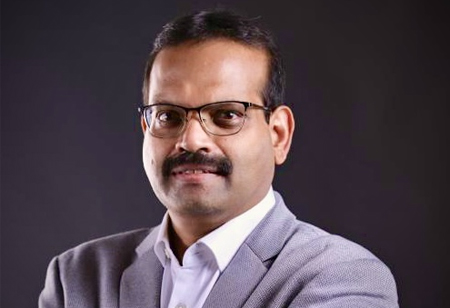
Rajavelu NK is the CEO of Crop Protection Business at Godrej Agrovet, bringing over 25 years of strategic leadership in diverse roles. With a robust background in sales, strategic planning, and new product introduction, he excels in business development, brand management, and P&L responsibility. Rajavelu has driven profitable growth throughout his career, notably at Dow AgroSciences, where he led both domestic and international businesses. Passionate about mentoring and industry contributions, he enjoys global travel and fostering high-performing teams.
Crop protection products were instrumental in driving the productivity gains of India’s Green Revolution, helping transform the nation into a food-secure powerhouse. Yet today, a new range of challenges—from climate change to environmental degradation—demand a more balanced approach to crop protection, one that safeguards our harvests, boosts our yields while also preserving our farming ecosystems.
India in the immediate post-independence years was a food scarce nation reliant on imports to feed its population. The sole objective of the Green Revolution, therefore, was to transform the country into a food-secure nation by unleashing unprecedentedly high yields.
It achieved its goals, with foodgrain production surging over sixfold to 330 million tonnes in 2023 from 50 million tonnes in 1951. The country today stands as the world’s fourth-largest food producer and is growing enough food not just to feed its own people but the populations of 150 countries around the world.
Today, the need to preserve this hard won food security and global standing remains. But the need to ensure the longevity of our farmlands has become equally important. That’s because agriculture is facing a new set of challenges. The first is to feed a population that is already the world’s largest and still growing. The second is to do so while grappling with the impact of climate change.
As a result, where at the time of the Green Revolution the imperative lay in simply producing more food, today it has shifted to keeping the rate of food production up but doing so sustainably while preserving the vitality of our fields. The way we go about farming needs to evolve to accommodate this shift. This includes the approach to crop protection.
Back in the Green Revolution era, Crop protection solutions—which serve the dual role of shielding crops from threats like pests, weeds and disease outbreaks while also boosting yields—were used liberally.
But even as it achieved the Green Revolution’s primary objectives, this injudicious use of such synthetic, chemical-based products took its toll, depleting soil fertility, causing environmental degradation, creating a health hazard and driving the emergence of pesticide and herbicide-resistant pests and weeds. Moreover, the chemical run-off from these products endangered the wider ecosystem, poisoning water sources for instance or damaging the local biodiversity.
Our farmlands today already have a number of stressors—from extreme weather events to disrupted rainfall patterns—that are making it harder for them to yield the food they’re being called upon to produce. The last thing we need is to place a further burden on the already-stressed soil. Recognizing this, agrochemical companies, farmers and policymakers are driving a shift in the narrative.
Companies, for instance, are making their products more sustainable across their life cycle from research and development to manufacturing and even post-sale operations. They are also educating farmers, raising awareness about good agricultural practices and the efficient and judicious use of chemical products.
The government, meanwhile, is encouraging the adoption of a balanced approach to pest management combining the use of chemical products with integrated pest management (IPM) principles.
Integrated Pest Management is a carefully calibrated combination of compatible methods — cultural, biological, chemical and physical — working together to protect crops from pests.
It is a more sustainable and environmentally responsible approach to pest management with chemical pesticides only supplementing other more natural methods as a last resort as opposed to the convention practice of dousing the crop with pesticide. Adopting IPM principles thus effectively guards against pests while dramatically reducing the need for chemical-based products.
At the same time, the sector is embracing the use of technology like sensor-based Internet of Things to monitor crop and soil health and drones for spraying. Data on crop and soil health lets farmers know precisely how much product a crop needs, so that they can deliver just that amount and avoid over-spraying their fields. At the same time, using drones for spraying operations drastically reduces the health hazards that would otherwise result from manual spraying.
There have also been breakthroughs in the formulation process that have made crop protection solutions more environmentally friendly and spurred the development of bio-based alternatives. So we, as an ecosystem, are moving in the right direction. India already loses up to 30 to 40 percent of its annual crop output to pests. The incidences of pest attacks are growing and are only set to get ever more frequent as the climate warms. We, therefore, cannot completely do away with crop protection products.
But we can make them greener use them more responsibly. We can balance productivity with sustainability. Doing so is crucial. India’s — and much of the world’s — food security depends on it.
We use cookies to ensure you get the best experience on our website. Read more...